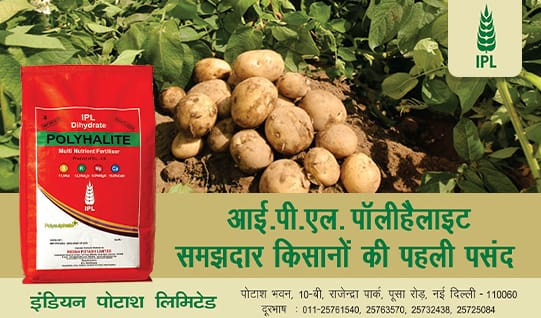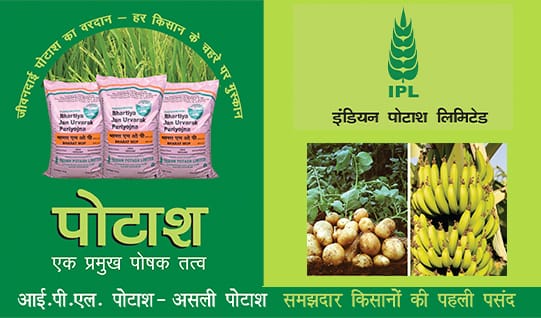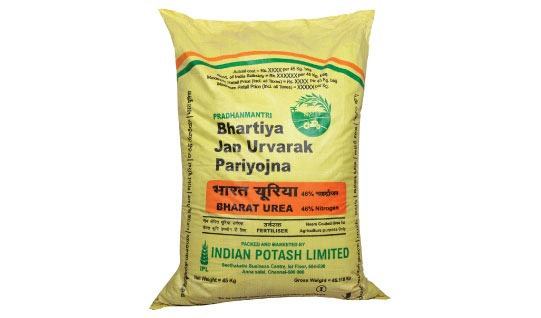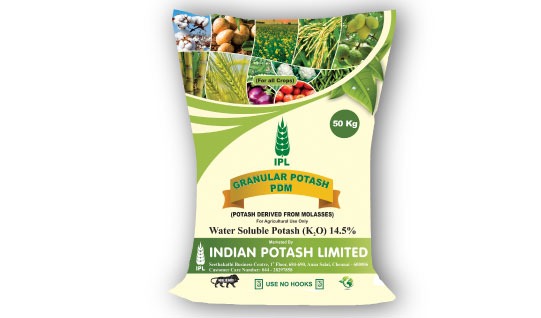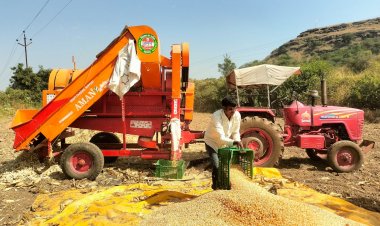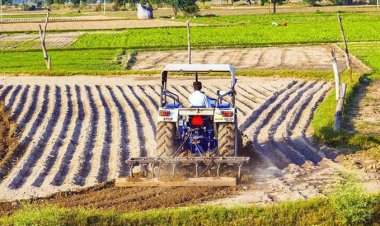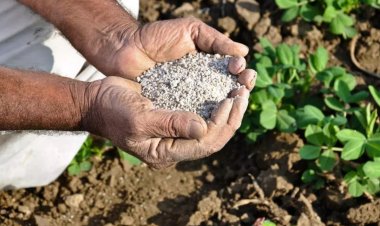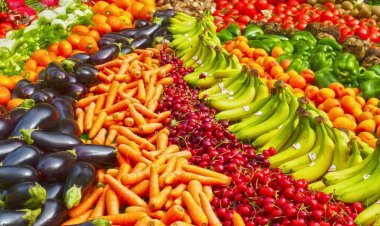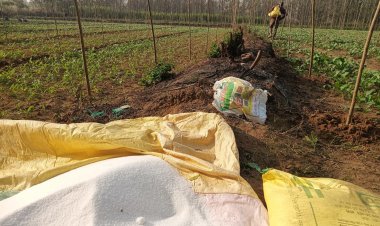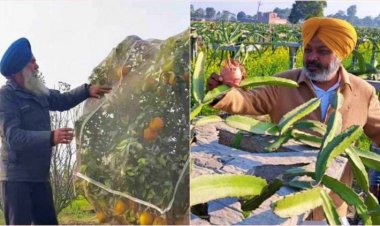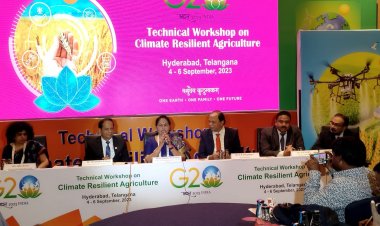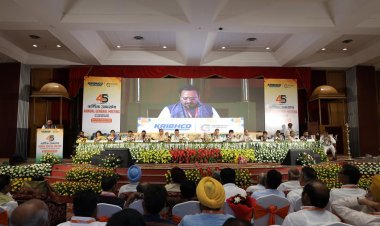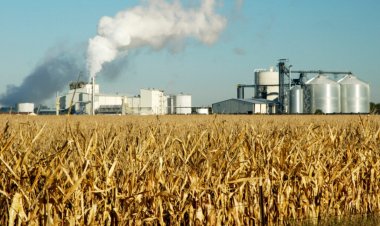Farm Mechanization Holds the Key for Agricultural Transformation Under Emerging Challenges
The article emphasizes the transformative role of farm mechanization in addressing the emerging challenges of Indian agriculture, including climate change, labor shortages, and sustainability. It highlights the need for scale-appropriate technologies, improved access through custom hiring centers, and integration of AI, robotics, and renewable energy. Agricultural engineering is positioned as a catalyst for innovation, productivity, and resilience.
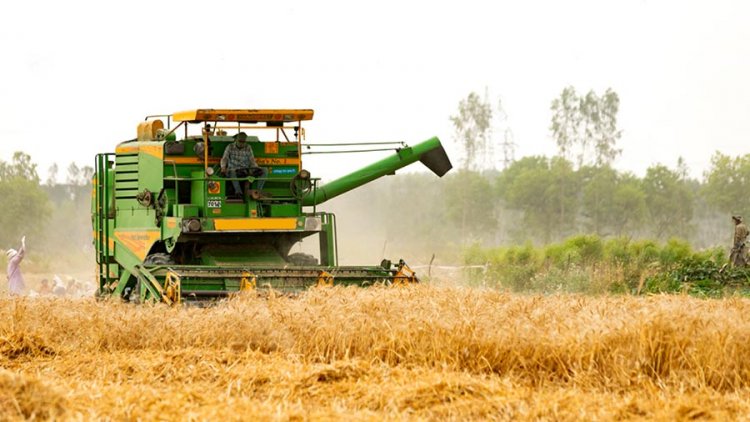
Agriculture is confronted with emerging challenges; environmental degradation, climate change, rapidly growing young population, and changing consumption patterns. In smallholder systems of the global South, manual labour preoccupies much of the physical and intellectual resources of a large share of the world’s 550 million family farms leading to drudgery, risks of changing climate, low cropping intensity and larger yield gaps. India has made significant progress in agricultural engineering with an average mechanisation level of 47 per cent compared to many developing countries. However, there exists a large variation in mechanization in different crops (69% in wheat, 33% in millets) and states (highest in Haryana and Punjab) and lags behind in comparison to other BRIC countries such as Brazil and China. Scale appropriate farm mechanization promises to help timeliness of farm operations, raise labour productivity and reduce the heavy toil of farming on the millions of smallholder farms, hence contributing to socioeconomic development through enhancing food security and employment opportunities while arresting environmental degradation. Mechanization is therefore placed at high pedestal on the development agenda of developing nations and emerging economies in the global South.
Poverty reduction, climate mitigation, land degradation neutrality, and agricultural transformation through sustainably intensifying production and strengthening agri-food system value chains are crucial to achieve faster growth. Farm mechanization is an essential integral part of the agricultural intensification process and has a key role in achieving several SDGs. Agricultural mechanization involves the use of mechanical power across the agri-food system value chain, including farm production, post-harvest handling, storage and processing. Farm mechanization offers a unique potential for smallholder farmers and is an essential agricultural input with the potential to transform the lives and economies of millions of rural families.
The famous quote, “Everything else can wait but not Agriculture” signifies the importance of timeliness of agricultural operations which can’t be achieved without mechanization. However, there is an urgent need for all stakeholders- farmers, supporters, researchers, extension agents, planners or policy makers- to understand and contribute to agricultural mechanization efforts across the entire farming system and with a value chain perspective.
Increased agricultural mechanization at farm level and in the agrifood value chain that is economically, environmentally and socially sustainable is critical. Use of agricultural mechanization within a sustainability framework can bring a wide range of benefits through time efficiency speeding up operations in the agri-food system value chain, increased yields, reduced production costs, increased cropping intensity, increased efficiency of production inputs, minimizing climate risks, reduced post-harvest losses and drudgery of agri-food system actors. However, context-specific value chain mechanization solutions are critical for achieving the goals of sustainably increasing food production Therefore, developing, refining, adapting and targeting scale appropriate value chain mechanization solutions to diverse cropping/farming systems, and soil types coupled with increased investments are critical for the impact at scale.
This article delves into the significant impacts of agricultural engineering research and education on Indian agriculture, advocating for convergence of innovation, education, and farmer empowerment to create a vibrant and sustainable agricultural landscape.
Agricultural Engineering: A Catalyst for Transformation
The agricultural sector in India has undergone a significant transformation, particularly since the advent of the Green Revolution when India was importer of foodgrains and now it exports almost 55 billion USD and likely to contribute to our national target of 5 trillion USD economy by 2030, as agriculture is contributing about 17-18 percent of national GDP. While the initial focus was unequivocally on enhancing crop production to achieve national food security, the contemporary challenges confronting Indian agriculture necessitate a far more comprehensive approach. These challenges encompass critical areas such as small and fragmented land holdings and diversity of farming systems, skewed mechanization operations, high equipment cost and poor after-sale service, financing of farm equipment, efficient post-harvest management to minimize food loss, adding value to agricultural produce to increase farmer incomes, and ensuring the long-term sustainability of agricultural practices to safeguard natural resources. Notably, the commercial financial institutions are primarily focusing on larger machinery and not small-scale machinery which is one of the biggest impediments to the increase in mechanisation level in India. Also, the complex process of financing farm implements and higher interest rates are not encouraging smallholder farmers for investments on mechanization. Agricultural engineering has emerged as a catalyst in addressing these multifaceted needs, playing a significant role in introducing and implementing transformative technologies across the agricultural value chain.
Empowering the Farmers and Enhancing Efficiency through Mechanization
One of the most significant contributions of agricultural engineering has been the widespread mechanization of farm operations. India has emerged as a global powerhouse in tractor manufacturing, producing nearly one million units annually i.e. half of the global tractor production. This remarkable achievement has not only reduced the physical drudgery faced by farmers, traditionally reliant on manual labor and animal power, but has also significantly improved efficiency in various farm operations. Tractors, combined with a range of implements like plows, harrows, and seed drills, have streamlined land preparation, sowing, and harvesting, enabling farmers to cultivate larger areas in shorter periods. AI, robotics, and new mechanical technologies are revolutionizing agricultural engineering research and education, driving unprecedented gains in productivity. AI-powered systems can analyze vast datasets from sensors and satellite imagery to optimize irrigation, fertilization, and pest control strategies, minimizing resource waste and maximizing yields. Robotics are automating labor-intensive tasks like planting, harvesting, and weeding, addressing labor shortages and improving efficiency. Moreover, advanced mechanical technologies, such as precision planting equipment and autonomous tractors, enable more accurate and efficient field operations. Through agricultural engineering research, these innovations are continuously refined and adapted to specific crop and environmental conditions.
Conservation Agriculture for Sustainability and Climate Resilience
Conservation agriculture (CA) is a paradigm shift in farming practices. Techniques such as zero tillage and direct seeding, both key components of conservation agriculture, have revolutionized land management by minimizing soil disturbance. These methods offer a multitude of benefits, including the conservation of precious soil moisture, reduction of greenhouse gas emissions through minimized tillage, and improvement of overall soil health by promoting beneficial microbial activity. Reducing the input cost and increasing the farmers’ income especially for the dryland areas (about 50%) is important as these have to be made green because they were bypassed by the Green Revolution. For this, there is a need to develop appropriate equipment and machineries which can help in adopting CA which has advanced very fast over the last two decades in Argentina, Brazil, USA, Canada, and Australia. Adoption of CA globally is a testament to its effectiveness, with practices being implemented on over 200 mha worldwide. While adoption of CA in India is increasing, there is still significant potential for expansion. Agricultural engineers are at the forefront of developing and adopting CA technologies to suit the diverse agro-climatic conditions of India, thereby contributing to a more sustainable and climate-resilient agricultural sector.
Optimizing Water Use and Enhancing Crop Productivity through Micro-irrigation
Water scarcity is an increasingly pressing concern in many parts of India. Micro-irrigation systems, such as drip irrigation and sprinklers, offer a revolutionary approach to water management by delivering water directly to the root zone of plants, and minimizing losses due to evaporation and runoff. Despite the clear advantages of micro-irrigation, only around 10% of irrigated land in India is currently under these systems. Out of 140 mha, micro-irrigation adoption has reached 10 percent area, with the potential to reach 30 percent. This represents a vast untapped potential to significantly improve water-use efficiency and enhance crop yields. Agricultural engineering plays a critical role in designing, installing, and maintaining these sophisticated irrigation systems, ensuring their optimal performance and maximizing their impact on agricultural productivity. Furthermore, research and development efforts are focused on developing innovative micro-irrigation technologies that are cost-effective and suitable for smallholder farmers in India.
The farmers expressed the need for knowledge beyond conventional agricultural practices, specifically secondary and specialty agriculture and emphasized that youth are less interested in routine farming methods. Therefore, we must promote innovative approaches such as vertical agriculture and protected cultivation. However, the area currently covered under protected cultivation in India is only approximately 70,000 ha as against 2.0 mha in China. To reach even 1,0 mha, we require a more aggressive and focused approach in mission-mode for significant improvement in agricultural engineering.
Skill Development for Empowering Youth
To fully harness the potential of agricultural engineering, it is imperative to invest in comprehensive skill development programs that equip the youth with the knowledge and expertise required to operate and manage modern agricultural technologies. These programs should focus on imparting skills in cutting-edge areas such as artificial intelligence (AI), robotics, drone technology, and precision farming tools. By providing young people with the skills needed to navigate the rapidly evolving agricultural landscape, we can create a new generation of technology-savvy farmers and agricultural professionals who can drive innovation and improve productivity. Furthermore, skill development programs should be tailored to the specific needs of local communities and should emphasize hands-on training and practical experience.
Making Technology Easily Accessible
The high capital investment required for modern agricultural equipment often presents a significant barrier for small and marginal farmers, who constitute the majority of the farming population in India. Establishing custom hiring centers, which function as machinery rental hubs, can effectively address this challenge by making advanced equipment accessible to farmers who cannot afford to purchase it outright. These centers can provide a range of services, including machinery rental, repair, and maintenance, as well as training on the proper operation of equipment. By easy access to modern technology, custom hiring centers can empower small and marginal farmers to improve their productivity and profitability. AI and robotics, including the use of drones for improved fertilizer use efficiency, employing nanotechnology need to be effectively used. However, to fully realize the potential of these technologies, it is crucial to train the youth. While technologies like the Happy Seeder enable in-situ conservation, improve soil health, and facilitate direct seeding of wheat after rice without burning rice straw, the limited availability of this machinery to farmers remains a major constraint. Therefore, there is a need to establish machinery hiring centers through farmers' cooperatives, farmer producer organizations, government agencies, or even by the industries themselves. The relatively short window of about 20 days for using this equipment, makes individual farmer investment in CA machinery less viable. Community-based approaches, facilitated by custom hire centers (including those established by Krishi Vigyan Kendras – KVKs), can significantly improve adoption. Furthermore, training youth to provide private extension services would be highly beneficial.
Similarly, while there is interest in investing in protected cultivation, such as greenhouses, successful operation requires specialized technology for fertigation, vernalization, and solarization. The adoption of these technologies is often hindered by lack of accessible innovative extension services. Therefore, large industries should leverage their Corporate Social Responsibility (CSR) initiatives to support institutions in providing private extension services, thereby empowering the youth and fostering sustainable agricultural practices.
Addressing Sustainability Challenges
Indian agriculture faces significant sustainability challenges due to resource depletion, climate change, and environmental degradation. Agricultural engineering offers a range of solutions to mitigate these challenges and promote a more sustainable agricultural system.
(i) Carbon Framing
Conservation agriculture practices with their focus on minimizing soil disturbance and promoting soil health, play a crucial role in carbon sequestration. By adopting CA practices, India can make a significant contribution to meeting its carbon sink target of 3 billion tons as per its commitments under the Paris Agreement. Agricultural engineers must pay greater attention for researching and developing innovative CA technologies that enhance carbon sequestration and improve soil health.
(ii) Reduction in Post-Harvest Losses
Significant quantities of agricultural produce are lost after harvest (6-7%) due to improper storage, inadequate processing facilities, and inefficient packaging. These post-harvest losses not only represent a significant economic loss to farmers but also contribute to greenhouse gas emissions through the decomposition of wasted food. Agricultural engineering plays a critical role in developing and implementing technologies for improved storage, processing, and packaging that minimize post-harvest losses. By reducing food waste, we can improve food security, reduce environmental impact, and increase farmer incomes.
(iii) Renewable Energy Integration
The agricultural sector is a significant consumer of energy, primarily for irrigation, farm operations, and post-harvest processing. Promoting the integration of renewable energy sources, such as solar power and biogas, can significantly reduce the dependence on fossil fuels and mitigate the environmental impact of agriculture. Solar-powered irrigation systems, for example, offer a clean and sustainable alternative to diesel-powered pumps, while biogas plants can convert agricultural waste into valuable energy. Agricultural engineers are actively involved in developing and deploying renewable energy technologies that are cost-effective and suitable for the specific needs of the agricultural sector.
Way Forward
To further enhance the impact of agricultural engineering education and research on Indian agriculture, following actionable steps for the way forward for a more sustainable and prosperous future are proposed:
(i) Curriculum Reorientation
Agricultural engineering education needs to be reoriented by including vocational training programs alongside traditional degree courses. This will equip students with the practical skills and knowledge needed to become entrepreneurs and innovators in the agricultural sector. By fostering a culture of entrepreneurship, we can create new opportunities for youth (including women) and drive innovation in agricultural technologies and practices.
(ii) Focus on Secondary Agriculture
Encouraging diversification into value-added products, such as processed foods, can significantly increase farmers' incomes and create new economic opportunities in rural areas. Agricultural engineering plays a critical role in developing and implementing technologies for food processing, packaging, and preservation. By supporting the development of secondary agriculture, we can create a more resilient and diversified agricultural sector.
(iii) Scaling Innovations
There is a need to develop enabling policies that incentivize the adoption of disruptive technologies to bring significant improvement in agricultural productivity and sustainability and transform rural economies. These technologies may include precision farming tools, drone technology, and AI-powered agricultural solutions.. Given the diversity of farming systems, soils, agro ecologies and socio-economic circumstances, a need based mechanization is critical for targeting geographically differentiated production systems. This will not only help in developing context relevant mechanization solutions but also help industry to set-up manufacturing capacity in relevant geographies to cater the local needs.
(iv) Empowering Farmers with Knowledge
Investing in strengthening extension services is important for ensuring that farmers have access to the information and technical support they need to adopt new technologies and practices. Training youth to provide private extension services for advanced technologies including AI, robotics, drone technology, protected cultivation and fertigation, can create new employment opportunities and improve the quality of agricultural extension services.
(v) Public-Private Partnership (PPP) for Adoption and Scaling Innovation
Public-Private Partnership (PPP) represents a powerful mechanism for accelerating the commercialization of research outputs and ensuring their adoption at the grassroots level. By leveraging the expertise and resources of both the public and private sectors, PPPs can facilitate the development and deployment of innovative agricultural technologies that address critical challenges facing Indian agriculture. PPPs can also play a crucial role in establishing extension services that provide farmers with access to information and technical support on the use of new technologies. By fostering collaboration between academia, industry, and government, PPPs can drive innovation and create a more vibrant and sustainable agricultural sector.
Conclusions
Agricultural engineering has emerged as a cornerstone of India's agricultural progress, playing a vital role in addressing critical challenges in productivity, sustainability, and rural livelihoods. Agriculture is not just about production; it is about creating value. By fostering innovation-driven growth through education and research, India can achieve its vision of becoming a global leader in sustainable agriculture while ensuring prosperity for its farmers. The path forward requires a collaborative effort involving academia, industry, and farmers, driven by a commitment to innovation, sustainability, and the empowerment of rural communities. By embracing the transformative power of agricultural engineering, India can build a more resilient, prosperous, and sustainable agricultural future to contribute significantly towards the 5 trillion USD national economy.
(The writer is Chairman, Trust for Advancement of Agricultural Sciences (TAAS) and Former Secretary, DARE & Former Director General, ICAR, New Delhi)



 Join the RuralVoice whatsapp group
Join the RuralVoice whatsapp group
